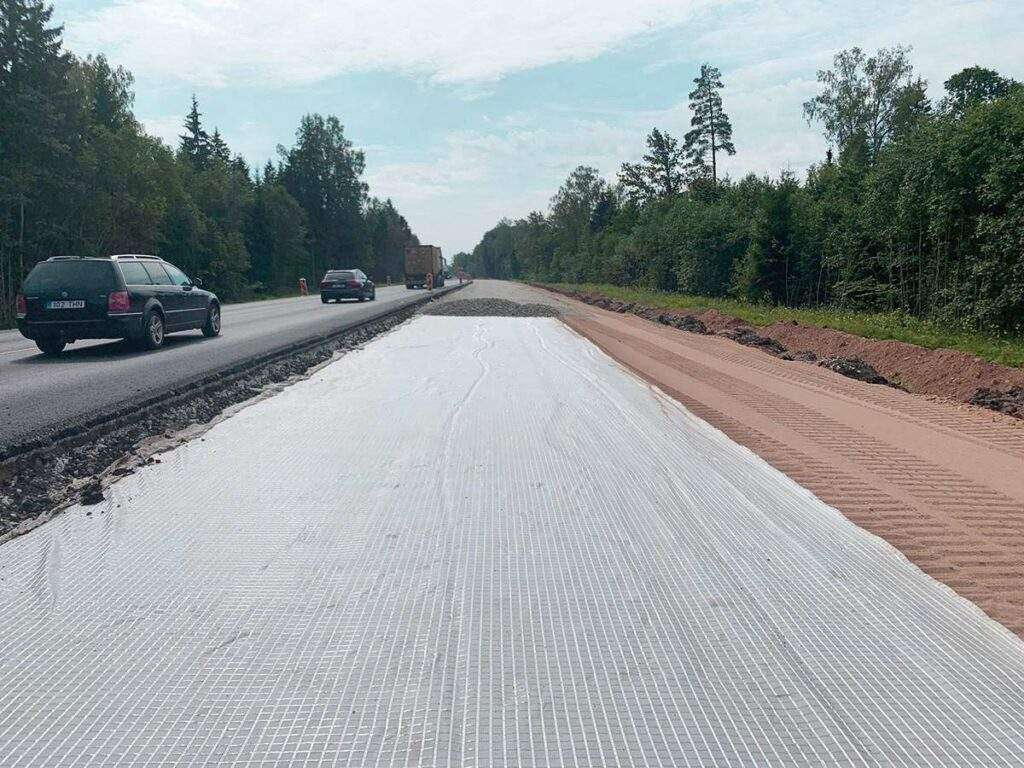Tips for selecting one of the best geogrid manufacturer companies for pavement solutions: There are many factors to consider when deciding which type of geogrid to use in a pavement project. The type of soil and the amount of traffic the pavement will be subjected to are two important considerations. Other factors such as the climate and the type of vegetation in the area can also affect the decision.

In general, the heavier the traffic, the stronger the geogrid should be. For example, a highway would require a stronger geogrid than a residential street. The type of soil is also important. Soils with a high clay content can be very sticky when wet and can cause problems for pavement. A geogrid that is designed for use in clay soils can help to stabilize the pavement and prevent problems.
The climate in the area can also affect the type of geogrid that should be used. For example, an area that experiences a lot of freezing and thawing may require a different type of geogrid than an area with a more stable climate. Vegetation can also be a factor. Areas with a lot of trees may require a different type of geogrid than an area with only grass.
There are many different types of geogrids available, and the best type for a particular project can vary depending on the specific conditions. Consulting with one of the best geogrid manufacturer companies can help to ensure that the right type of geogrid is selected for the project.
Roadworks are fast-moving with incredible ground situations that appear once the topsoil is deprived and soft spots are determined. Also, Geogrid for retaining walls is very useful. With the stress of keeping projects on track, a standard question asked is ‘how can geogrids support maintaining my project on time?’
A good rule of thumb is for low CBR subgrades, geogrids will lessen the subbase by 1/3 or increase ESA’s by 1/3.
The subsequential question is ‘which geogrid do I need?’
Geogrid selection functions in two ways:
1. Refined Calculation
The design engineer calculates a pavement layout deeming subgrade CBR, road base, ESA’s, and the geogrid’s automatic properties. Reputable geogrids will have a powerful track record, with self-reliant testing executed in both the lab and full-scale field testing.
The design creator should have all the mechanical properties of the geogrid to input into definitive commercial design software. Note that the usage of proprietary manufacturers’ design software should only be utilized once design output legal liability is ascertained. This is because liability for the design requires it to be clear should a pavement not perform.
Once the parameters have been penetrated, the layout will then define a subbase consistency and a tensile capacity. Typical generic grids have biaxial tensile capabilities of 20, 30, or 40 kN/m.
2. Trial and Error
In some cases, a project starts and incredible soft spots are experienced on-site. Due to the time and cost of quitting work and then immersing geotechnical engineers and design engineers, it is not practical or cost-effective to develop a complete from-scratch solution.
In these cases, the project manager on location can work with the geogrid technological team to try a grid to overwhelm the issue quickly and cost-effectively.
Generally, a grid will be laid in at the subgrade level and 300mm of sub-base spread over the top. At this point, the coating is proof-rolled and if considered satisfactory, usually with a differential settlement of less than 20mm (or other field criteria), the next compaction lift is carried out.
If it is still soft with rutting arising under wheel loads, then another geogrid is laid and a following 300mm of subbase is laid.
There is an art to selecting the proper starting biaxial tensile ability of the grid: something that a skilled geosynthetics supplier can assist with. Some standards to take into account include the road’s importance, its lifespan, traffic volume, installation time, costs, and subbase availability.
As an example, a 40kN geogrid is selected on very soft CBRs to minimize the subbase profundity and maximize construction speed. Numerous 20kN grids are chosen on higher subgrade CBRs or where subbase consistency will exceed 300mm.
Also Read: Website and Its Types: Advantages Of Having A Website
In all cases, it’s intelligent to refer to your local State Road Authority policies, for example, QLD MRTS 58 for Road Subbase Reinforcement using Geogrids/Geocomposites.
Other Selection Criteria suggested by geogrid manufacturer companies:
There is a range of other aspects that go into choosing the right geogrid, including:
Subbase particle allocation– generic biaxial grids will stabilize a well-graded sub-base up to 70mm.
Use of geotextile-laminated geogrids or a particular geogrid and divergence geotextile
Special deliberation for pH ranges beyond the 4 to 9 limits.
Roll width to decrease the potential for wastage- geogrid widths vary but are generally 4m to 6m. Choosing geogrids with a reasonable width will help with minimizing wastage.
Guidance on choosing geogrids for pavement applications.
When chosen accurately, geogrids offer considerable time and cost savings.
For more information on product selection, contact Singal industries as they are one of the best Geogrid Manufacturer companies in India. Singhal Industries always manufactures the best quality products as we put customer satisfaction always on priority.